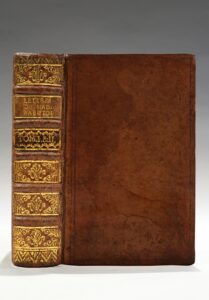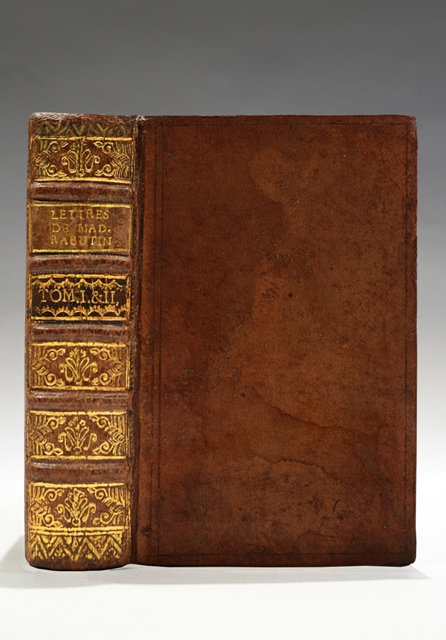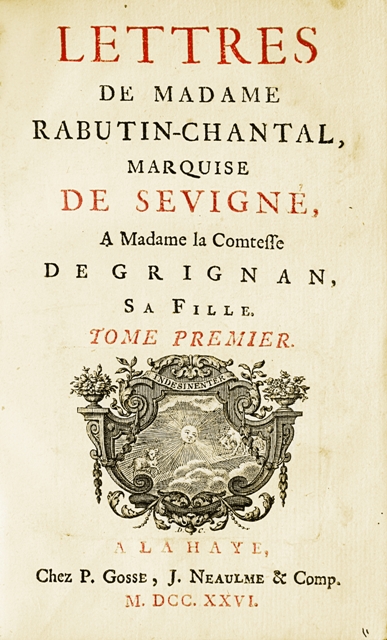The Hague, P. Gosse, J. Neaulme & Comp., 1726.
2 parts in one 12mo volume [154 x 95 mm] of: I/ (10) ll., 344 pp., (1) l. of errata, (1) bl.l.; II/ (1) title-leaf, 298 pp., (7) ll. of errata and table. Full calf, blind-stamped fillet on the covers, spine ribbed and decorated, light and dark brown morocco lettering pieces, red edges. Contemporary binding.
“Partly original edition, containing 39 more letters than the previous ones. It is extremely rare.” Tchemerzine, V, 820. Brunet, V, 325; Morgand et Fatout, 10665; Picot, Livres du Baron J. de Rotschild, II, 1888.
“Two editions published in 1726, one from Rouen and the other one from The Hague, giving respectively 138 and 177 letters, are conceived in the same spirit.” (En Français dans le texte, n°110).
“The letters already published give many variations compared to the text from Rouen. A contemporary note by M. Walckenaer lets us know that the publication was made by a man called J.-J. Gendebien, who is the author of the notice and the explanations added to the letters.” (Picot).
The forced separation between the marquise and her daughter, due to the daughter’s wedding, has given us the liveliest chronicles of Louis XIV’s reign and one of the great works of our literature.
“In order to forget her sadness and to get closer in her mind to this faraway daughter, Mme de Sévigné started with her an everyday and every moment correspondence. The Fouquet trial (about which is also dedicated a series of letters she wrote to the marquis de Pomponne); the king’s love life with La Vallière, la Montespan and others; the slow rise of Mme de Maintenon, La Grande Mademoiselle’s missed wedding, the States of Britany, Vatel’s death, so many events and plots that caused these epistles, so famous today. Next to Versailles and its pomp, there is Paris, where the marquise lives, from 1677, in the Hôtel Carnavalet (that she calls “ma Carnavalette”); there are the final rehearsals of trending authors, and these authors are called Racine and Molière; there are the weddings, the funerals and the sermons of the great preachers, these are Bossuet, Bourdaloue, Fléchier; there are the diners in town and the conversations with friends: Mme de la Fayette, Retz, who probably, dedicated his Memoirs to her, Condé, La Rochefoucauld…”
A precious copy preserved in its contemporary binding.
See less information



